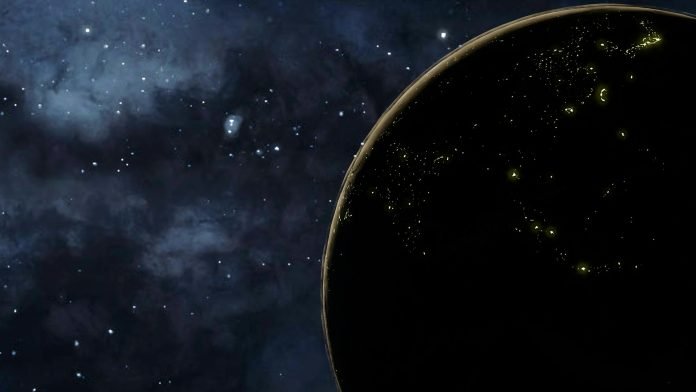
In a groundbreaking study, scientists have raised questions about whether black holes are responsible for dark matter in the universe.
This new research, conducted by the OGLE (Optical Gravitational Lensing Experiment) survey from the University of Warsaw, suggests that black holes might make up only a tiny fraction of dark matter, contradicting earlier theories.
Dark matter is a mysterious substance that makes up about 27% of the universe.
Unlike ordinary matter, which we can see and touch, dark matter doesn’t emit light or energy, making it invisible and detectable only through its gravitational effects.
Understanding what dark matter is has been a major challenge for scientists.
Some scientists theorized that black holes, especially those formed in the early universe, could be a significant component of dark matter.
These black holes, known as primordial black holes, were thought to have formed from density fluctuations shortly after the Big Bang. If true, this would help explain the massive black holes detected by the LIGO and Virgo gravitational wave detectors.
To test this theory, the OGLE team conducted a nearly 20-year-long study, observing around 80 million stars in a nearby galaxy called the Large Magellanic Cloud. They used a method called gravitational microlensing, where a massive object like a black hole bends and magnifies the light from a background star.
This effect can reveal the presence of black holes even though they emit no light.
The OGLE team expected to find many microlensing events if black holes made up a large part of dark matter. Specifically, they predicted 258 events for black holes of 10 times the mass of the sun, 99 events for black holes of 100 solar masses, and 27 events for black holes of 1,000 solar masses.
However, they found only 13 microlensing events, and these could be explained by known stars in our galaxy or the Large Magellanic Cloud.
The study’s findings suggest that massive black holes can account for at most a few percent of dark matter.
For instance, black holes of 10 solar masses may comprise just 1.2% of dark matter, those of 100 solar masses up to 3%, and black holes of 1,000 solar masses up to 11%. This challenges the idea that primordial black holes could be a major component of dark matter.
If black holes aren’t the primary component of dark matter, what is? Scientists continue to explore other possibilities. Some believe dark matter might be made of unknown elementary particles.
Despite decades of research, including experiments with the Large Hadron Collider, no such particles have been definitively identified.
The study’s results, published in Nature and The Astrophysical Journal Supplement Series, mark a significant step in understanding dark matter. They highlight the need for new theories and more research to uncover the true nature of this mysterious substance.
Meanwhile, the origin of the massive black holes detected by LIGO and Virgo remains an open question, with scientists exploring various possibilities, such as the evolution of massive stars or mergers of smaller objects in dense star clusters.
The OGLE team’s findings have important implications for our understanding of the universe. They show that while black holes play a role in the cosmos, they are unlikely to be the main component of dark matter.
This discovery helps narrow down the possibilities and sets the stage for future research in this fascinating area of astronomy.



